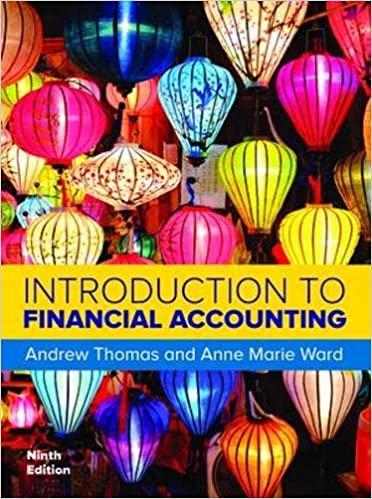Answered step by step
Verified Expert Solution
Question
1 Approved Answer
Assume you are a mid-level executive at Automotive Solutions Inc., and you have been assigned to analyze the company's financial statements for 20Y7 and 20Y8
Assume you are a mid-level executive at Automotive Solutions Inc., and you have been assigned to analyze the company's financial statements for 20Y7 and 20Y8 and make a report for upper-level organizational leaders.
The following tables show the comparative financial statements for Automotive Solutions Inc. The market price of Automotive Solutions Inc. common stock was $119 on December 31, 20Y8. The market price of Automotive Solutions Inc. common stock was $103 on December 31, 20Y7.
| AUTOMOTIVE SOLUTIONS INC. | |||||||
| Comparative Statement of Stockholders' Equity | |||||||
| For the Years Ended December 31, 20Y8 and 20Y7 | |||||||
| 20Y8 | 20Y7 | ||||||
| Preferred stock | Common stock | Retained Earnings | Preferred stock | Common stock | Retained Earnings | ||
| Balances, Jan. 1 | $500,000 | $500,000 | $5,375,000 | $500,000 | $500,000 | $4,545,000 | |
| Net income | 900,000 | 925,000 | |||||
| Dividends: | |||||||
| Preferred stock | (45,000) | (45,000) | |||||
| Common stock | _______ | _______ | (50,000) | ________ | _______ | (50,000) | |
| Balances, Dec. 31 | $500,000 | $500,000 | $6,180,000 | $500,000 | $500,000 | $5,375,000 |
| AUTOMOTIVE SOLUTIONS INC. | ||
| Comparative Income Statement | ||
| For the Years Ended December 31, 2018 and 20Y7 | ||
| 20Y8 | 20Y7 | |
| Sales | $10,000,000 | $ 9,400,000 |
| Cost of goods sold | (5,350,000) | 4,950,000) |
| Gross profit | $ 4,650,000 | $ 4,450,000 |
| Selling expenses | $(2,000,000) | $(1,880,000) |
| Administrative expenses | (1,500,000) | (1,410,000) |
| Total operating expenses | $ (3,500,000) | $(3,290,000) |
| Operating income | $ 1,150,000 | $ 1,160,000 |
| Other revenue and expense: | ||
| Other revenue | 150,000 | 140,000 |
| Other expense (interest) | (170,000) | (150,000) |
| Income before income tax | $ 1,130,000 | $ 1,150,000 |
| Income tax expense | (230,000) | (225,000) |
| Net income | $ 900,000 | $ 925,000 |
| AUTOMOTIVE SOLUTIONS INC. | ||
| Comparative Balance Sheet | ||
| December 31, 20Y8 and 20Y7 | ||
| Dec. 31, 20Y8 | Dec. 31, 20Y7 | |
| Assets | ||
| Current assets: | ||
| Cash | $ 500,000 | $ 400,000 |
| Marketable securities | 1,010,000 | 1,000,000 |
| Accounts receivable (net) | 740,000 | 510,000 |
| Inventories | 1,190,000 | 950,000 |
| Prepaid expenses | 2,50,000 | 229,000 |
| Total current assets | $3,690,000 | $3,089,000 |
| Long-term investments | 2,350,000 | 2,300,000 |
| Property, plant, and equipment (net) | 3,740,000 | 3,366,000 |
| Total assets | $9,780,000 | $8,755,000 |
| Liabilities | ||
| Current liabilities | $ 900,000 | $ 880,000 |
| Long-term liabilities: | ||
| Mortgage note payable, 10% | $ 200,000 | $ 0 |
| Bonds payable, 10% | 1,500,000 | 1,500,000 |
| Total long-term liabilities | $1,700,000 | $1,500,000 |
| Total liabilities | $2,600,000 | $2,380,000 |
| Stockholders' Equity | ||
| Preferred $0.90 stock, $10 par | $ 500,000 | $ 500,000 |
| Common stock, $5 par | 500,000 | 500,000 |
| Retained earnings | 6,180,000 | 5,375,500 |
| Total stockholders' equity | $7,180,000 | $6,375,000 |
| Total liabilities and stockholders' equity | $9,780,000 | $8,755,000 |
analyze the company's financial statements for 20Y7 and 20Y8:
- Discuss the purpose of the report and the role of accounting in business.
- What are the two major objectives of accounting and how are they achieved?
- What kind of information do these financial statements provide to internal stakeholders, such as organizational leaders within the company, and to external stakeholders, such as lenders and current or potential investors?
- How do internal and external stakeholders use financial accounting information?
- Put together a liquidity analysis by computing and using the appropriate ratios to assess liquidity.
- Compute a minimum of three liquidity ratios for the years ended Dec 31, 20Y8 and Dec. 31, 20Y7 and show your supporting calculations. Use the same three liquidity ratios for both years.
- Analyze the ratios computed and discuss any insights or conclusions that can be drawn from your analysis.
- Put together a solvency analysis by computing and using the appropriate ratios to assess solvency.
- Compute a minimum of three solvency ratios for the years ended Dec 31, 20Y8 and Dec. 31, 20Y7 and show your supporting calculations. Use the same three solvency ratios for both years.
- Analyze the ratios computed and discuss any insights or conclusions that can be drawn from your analysis.
- Put together a profitability analysis by computing and using the appropriate ratios to assess profitability.
- Compute a minimum of three profitability ratios for the years ended Dec 31, 20Y8 and Dec. 31, 20Y7 and show your supporting calculations. Use the same three profitability ratios for both years.
- Analyze the ratios computed and discuss any insights or conclusions that can be drawn from your analysis.
- Draft a summary of what the financial statements indicate about the company's overall financial health and performance, strengths and weaknesses of the company, as well as any identified positive or negative trends and the risk of investing in the company.
Step by Step Solution
There are 3 Steps involved in it
Step: 1

Get Instant Access to Expert-Tailored Solutions
See step-by-step solutions with expert insights and AI powered tools for academic success
Step: 2

Step: 3

Ace Your Homework with AI
Get the answers you need in no time with our AI-driven, step-by-step assistance
Get Started


